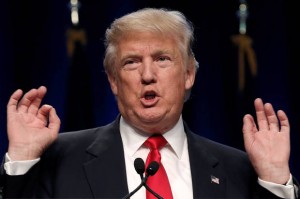Trump’s child-care policy: A combination of the useless and the inadequate
< < Go Back
Donald Trump’s child-care policies test Republican dogma and won’t do much to address rising costs.
Donald Trump will stop by Aston, Pennsylvania, this evening to lay out a more fully developed version of the child-care policy he teased about last month. Going by early indications, it looks like the Republican’s proposal is a mix of useless and inadequate policies that won’t really fix the problem of wildly expensive child care.
Let’s start with the useless. As Trump hinted last month, the centerpiece of his plan is a provision letting parents deduct the costs of child care from their taxes. The problem here is that people who need the most help affording child care — poor and low-income families — frequently don’t have any federal income tax burden. If they’re already paying zero dollars in federal income tax, an extra deduction won’t do them any good; they’ll still be paying zero dollars.
Moving on to the inadequate: The Wall Street Journal has reported that Trump is throwing in “‘spending rebates’ of up to $1,200 a year to lower-income families through the Earned Income Tax Credit.” It’s not entirely clear what this means, but the usefulness of an extra $1,200 toward largely child care depends on where you live. If you live in, say Mississippi, where infant care costs just less than $5,000 a year on average, then a $1,200 subsidy is pretty decent. But if you live in California ($11,817 is the average annual cost for infant care), or Colorado ($13,154), or New York ($14,144), or Minnesota ($14,366), or Massachusetts ($17,062) or, God help you, the District of Columbia ($22,631), then that $1,200 starts looking less and less helpful.
By contrast, Hillary Clinton’s plan to cap household child-care expenses at 10 percent of income delivers a lot more in the way of savings.
More From Salon.com:




